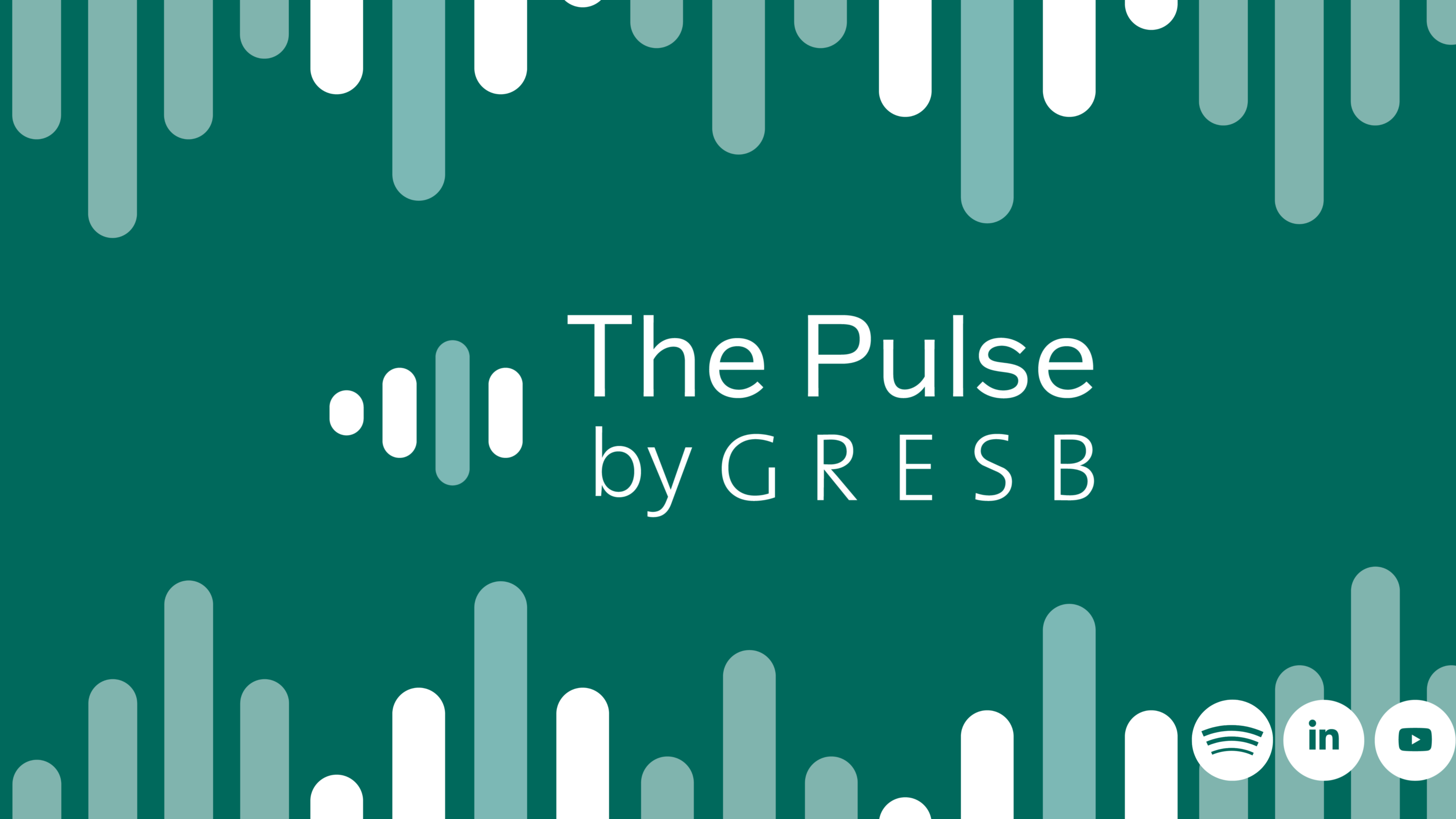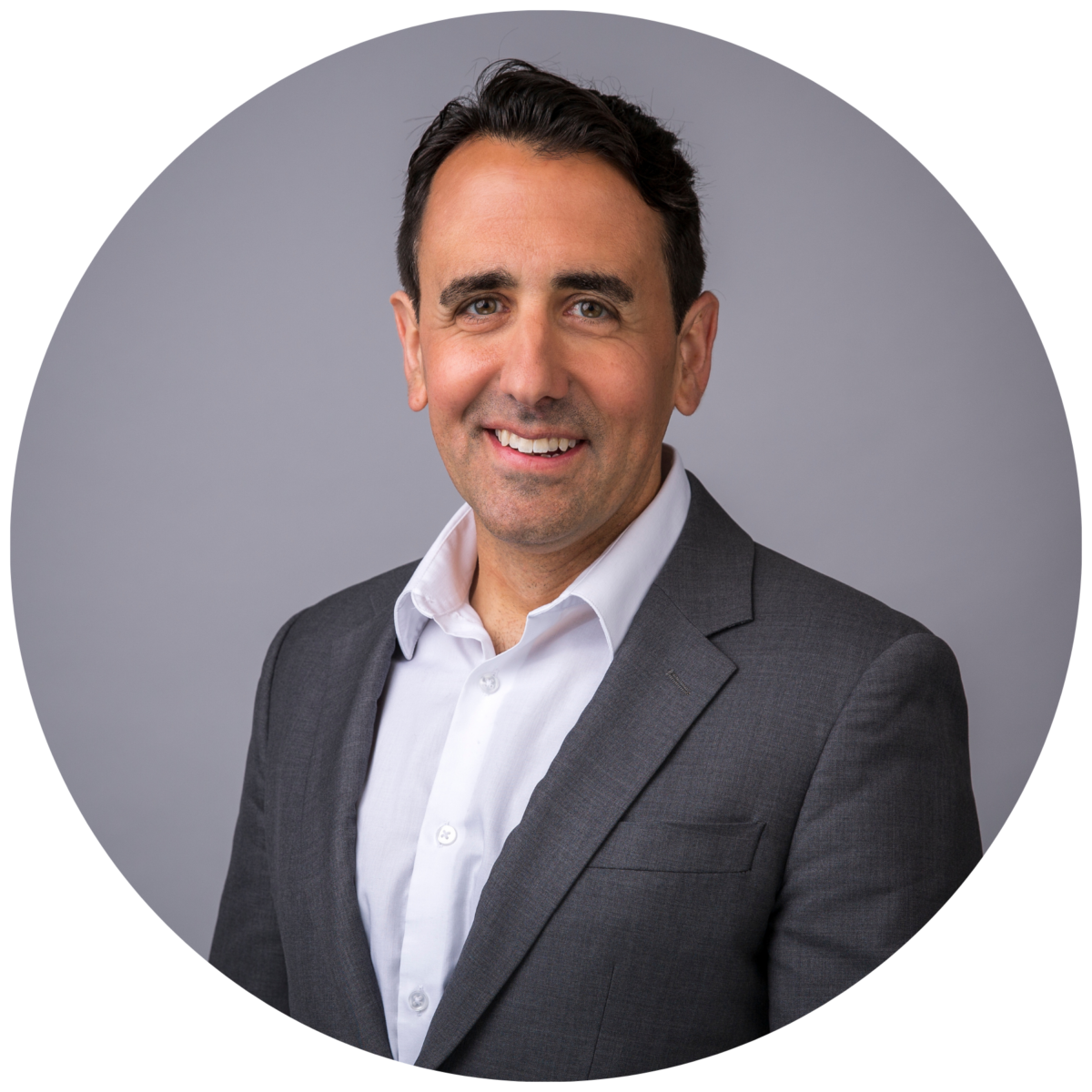
The Pulse by GRESB
The Pulse by GRESB is an insightful content series featuring the GRESB team, partners, GRESB Foundation members, and other experts. Each episode focuses on an important topic related to either GRESB, ESG issues within real assets industry, decarbonization efforts, or the wider market.
- Watch on Youtube
- Listen on Spotify
- Listen on Apple Podcasts
Brown to Green: Measuring the Impact of Sustainable Improvements in Real Estate Investments
In this episode of The Pulse by GRESB, we bring you a conversation about the impact of sustainable improvements in real estate investments. Join our experts as they discuss distinct real estate investment strategies, the specific benefits of brown-to-green investments for achieving long-term decarbonization goals, and the role of regulatory policies in shaping sustainable investment strategies. Watch the episode below, featuring:
Transcript
Can’t listen? Read the full transcript below. Please note that edits have been made for readability.
Tyler: Hello everyone, this is The Pulse by GRESB and I’m Tyler Guthrie, your host today. I’m joined by wonderful colleagues Parag Cameron-Rastogi and Chris Pyke. Hi guys!
Chris: Hey, Tyler. Hi, Parag.
Parag: Hey.
Tyler: It’s good to have you on. Today we are talking about a really important topic in real estate investing. It’s something that you guys both covered in a recent article to PERE, Private Equity Real Estate. It’s the Brown-to-Green strategies and how it fits into a concept of sustainable investing.
So I think jumping straight in, Parag, can you briefly explain the distinction between sustainable real estate and sustainable investing in real estate?
Parag: So, if you think about the context within which we are having this conversation and the context within which GRESB exists, real estate is a huge contributor to global greenhouse gas emissions. So, sustainable real estate or sustainable buildings are buildings that have low emissions or high performance. So in other words, they’re good for the planet, they’re good for people that use them, and eventually they’re also good for your bottom line. Sustainable investing is the allocation of capital to achieve these low emissions.
Now, that doesn’t always imply that you’re taking quote unquote, bad buildings and making them better. Sometimes, what that what that means is just buying good buildings, buildings that are already green. So that’s the distinction we’re trying to make in this article and this conversation, that sustainable investing can mean just buying good buildings or it can mean taking bad buildings and making them better. Whereas sustainable real estate or building is a good building.
Chris: Love it. And Parag, let me just say one follow up,
is saying sustainable building can be a sustainable investment, but sustainable investing is bigger than the concept of sustainable buildings.
Tyler: Good distinction. And actually, going a little bit deeper, how does GRESB support these different investment strategies? Like, what do we know about the way investors and managers are working today?
Chris: Absolutely, let’s unpack that a little bit because it requires a tiny bit of history. First, GRESB came out of a tradition where the goal was to provide transparency to help investors understand the quality, the sustainability of what they were investing in. So we were trying to basically provide, in the form of a benchmark report, a spectrum of green. We said, hey, this is brown, and we provided a 0 to 100 score to say this is green. And investors could embed that in their strategies.
So the GRESB classic approach was to say, “Hey, you have to A, be transparent with us, and then maybe we set a minimum floor to say we only invest in real estate that is so good. Like, currently green real estate.” Okay, that’s a popular strategy. However, the rest of the benchmark report is all about the Brown-to-Green strategy that Parag mentioned. So, if you read further into a benchmark report and you see the way that participants improve year over year, that is a way to have a conversation about whether your rate of improvement is keeping up with your peers.
And if you go further down, and you look at the strengths and weaknesses, and again, you program that into your annual engagement, we have a way of talking about that. So, in a very literal way, it’s always been the second thing we’ve talked about. The headline has been: Are you great today? And that’s what it means to be a sector leader or something else,
but right below it we’ve supported this other strategy. The change is we see a growing appreciation that there are multiple ways to use that information to create value and drive change.
Tyler: I guess that raises a question of why an investor, especially a responsible investor, might choose to invest in high carbon assets as opposed to something that’s currently sustainable?
Parag: I think the most obvious reason you might invest in a high carbon asset is because if you are investing in real estate, you kind of have to take the good with the bad, because the buildings that do exist, in most cases, we still need them.
If they generate income, it’s good, because you keep generating income. So it is a strategy to to take a building that is potentially high carbon and improve it, because that is something that many investors know how do now. It’s something that has been proven to yield good outcomes in terms of operational efficiencies, carbon reduction, and better outcome for the people who use those buildings.
So, the point being that in your exclusionary strategies, you can’t sort of wish these high carbon buildings away. Because they’re not leaving the planet, they’re still there, somebody else is gonna operate them and they’re still gonna continue emitting. So you have an opportunity to use your capital to make those emissions reductions.
Chris: And, to wrap around that. I mean, when I think about why you’d invest in a low performing building I’m like, hey, that’s real estate. I want to buy low and sell high. I wanna buy something that someone else sees as a dog. I.E. They’ll give it to me at a discount and I wanna fix it up, make it greener, and then sell it for what people are going to perceive as a premium. If you view where GRESB started, the original ESG, as an exclusion framework, you’re saying hey, I get ESG information so I can avoid investing in cluster bombs, or landmines, or petrochemicals, or whatever. If you view the purpose of getting this information so as to exclude certain assets from your investing horizon, you might exclude brown buildings. Non-green buildings. You might say “I have a minimum threshold, they must be this green”. That is an entirely cogent investment strategy that has long roots. On the other hand, that might prevent you as an issue of strategy, from investing in the low performers, the currently low performers that Parag mentioned. A Brown-to-Green strategy, where you invest in the low hanging fruit, and then you bring them up. That creates a risk for you that you have to deliver. You’ve bought low, your intention is to sell high. On the other hand, a Green-to-Green strategy also creates some risks and opportunities. You have the security of being able to tell your partners that we only invest in currently good stuff. However, you also have the obligation to keep the green stuff green. And you probably paid a premium for it. So these are complementary strategies. If you want the security, and you’re willing to pay the premium to buy the green stuff now and maintain it as green to exit, cool. You’ve got a Green-to-Green strategy. If you have the confidence to invest in brown, invest what’s needed and bring it up to green, you can put the green premium to your advantage and exit strong.
They both make sense as investment strategies. They’re both different as investment strategies.
Tyler: And I think this is really the response to some of the criticisms and recent stories and podcasts over the last year that’s been talking about ESG investing, sustainable investing, as kind of not really driving change, but just kind of chasing what’s already green.
That said, what are some of the data points that we have that really focuses on how Brown-to-Green investments can actually really meet long term decarbonization goals?
Chris: Oh, a hundred percent. I’ll give you a vignette to start with.
We had an event back in New York City, right? It was hosted by Macquarie Asset Managers.
And after an hour and a half of an event, we the the best story of the day. Macquarie sat there and and told us about an investment they made in a waste management firm in the Midwest. And they very sheepishly said: Yeah, yeah, and we’ve been working with this firm and really enhancing their ESG and really helping them come along.
And it turned out, what they had done when they made their investment in that firm, they had a GRESB infrastructure score of 15, or 12, or something like that. Within two years, that company had a GRESB score over 80 and it had completely transformed the process by which it manages and delivers sustainability. They were a little sheepish, a little skittish, a little bit not out front to say that’s the story. But we know that that is the actual difference that an engaged investor makes using a framework, in that case, GRESB infrastructure. So, do we know it’s possible? 100%. Can it be more prominent? Yes. Parag, why don’t you tell us, you know, how impactful it can be in quantitative terms.
Parag: Yes. So, you know, thinking about this Brown-to-Green as a spectrum. We took the entire GRESB database, and we did this experiment where we created synthetic portfolios and we showed that when you allocate capital to take assets that, in our database, are on the, on the worst side of the spectrum, so on the browner side of the spectrum, and you invest capital to bring them up to some reasonable standard and we didn’t even say like you go up to the top level, you go to like median of slightly higher.
The impact you have then, compared to the impact of buying already green assets and operating them well, keeping them green, maybe upgrading them a little bit. The difference in impact is like 30 times or more. Which is a huge change in terms of like the impact on overall emissions. Right? Because of course, what the planet at this point cares about and what we all care about is total emissions reductions. Right? And high reductions will only happen if you take high emission assets and make them low emissions assets. I’m not belittling the challenge of buying premium assets and keeping them green. That is definitely a challenge, and that’s something we do appreciate at GRESB, and we reward people with great scores for for that. But GRESB is not about shying away from investing in high emissions assets.
Chris: Tyler I want to make sure that the folks listening to this heard the number. Like, the number that Parag said, is it can be 30 times as impactful, and I just want to share that when Parag first did the math and showed me the results, I asked him to check his homework. And I thought, hey, the primary problem we’re going we’re going to have is people believing a number that big.
But we’ve checked checked the math, we’ve done the homework, and the number is that big.
Tyler: It’s similar to taking a really old car off the road in that improvement that you get as opposed to going from a hybrid to all electric, like it’s an orders of magnitude difference.
So jumping real quick into a side point, what is the role of regulation in this investment universe?
Chris: This is a great question. For me, there’s both a positive and negative. Regulation as a general rule is setting the floor. Right? Regulation is not going to lead us to transformation.
Today, regulation is a double edged thing. On one level, regulation is, especially in Europe, is focusing on the top 15 percent of the market, in the sense of things like taxonomy. It may be playing a role in directing this Green-to-Green type investment. In other places we have seen, for instance in the Inflation Reduction Act in the US, directing funds specifically to technology improvements like heat pump upgrades to the bottom half of the market. I still think that regulation is sorting itself out, trying to figure out whether it is trying to kind of direct us to the top of the market in a taxonomy sense, or whether it’s trying to allocate to the bottom part of the market. One way or the other, it’s not sorted. We have examples in both directions. I find it inconsistent, personally. What do you make of that situation out there?
Parag: I think it I think it depends on the regulation. What sort of level of ownership you’re talking about. In the sense that if you’re talking about a single asset, regulation would often set the floor of energy efficiency as Chris pointed out for out, for example. And this can have some serious, serious commercial impacts. You know I’m sort of preaching to the converted here, but, towards the beginning of my career, there was this panic in the UK about minimum energy efficiency standards. People thought it’s never going to be enacted, but it did get enacted. And then almost the day it got enacted, there were hundreds of assets that suddenly lost a ton of value because they couldn’t be released without significant upgrades. So if somebody is going to buy that asset off you, or if you were going to release it, you had to make an investment. So sometimes regulation can set the floor, but the floor can be high enough that some assets have to be upgraded. If you think about regulation as regulating the composition of entire portfolios. Yeah. Then sometimes we can have both outcomes. People can just dump their assets and come up with a portfolio that’s great. Or they could actually take the time and capital to improve the existing assets in their portfolio.
Tyler: For sure. And I guess, looking ahead, what are the emerging opportunities for capital allocation that you see?
Chris: My take on this is that you know, this year, we’re going to spend some time reflecting on the 15 year evolution of GRESB. During our global results, we are gonna talk about the impact that we’ve seen and we’ve had. It is true that a large fraction of that has been Green-to-Green investments. We have seen folks want to define green, they want to buy green, they want to profit from green. That’s 100%. But I think think that there is an increasing recognition, and as example, I might turn to a strategy, if we look at if you look at PSP investments in Canada. And you look at how they are being explicit about balancing a Green-to-Green portfolio with a Brown-to-Green or transition portfolio, and they are explicit about how they want to increase their allocation to the transition or Brown-to-Green over time. I think that’s what we’re going to see. And personally, as someone who wants to see the kind of impact that Parag mentioned earlier, ultimately our goal is to decarbonize the sector. We want to see that more balanced investment. We want to see opportunities for Green-to-Green. That matters. But we also want to see increased allocation to Brown-to-Green to capture the impact that Parag talked about. So we’re looking at a rebalancing and hopefully an increased allocation to this strategy going forward.
Tyler: What are some of the tools that GRESB offers members in the wider investment universe to actually make this happen?
Chris: I hope that our members know, they don’t have to wait for an additional tool. There is stuff in the benchmark report that has been there that they could better use of. So, that means, going beyond the first page. Go beyond the second page. Go beyond the sector leader or the green stars. Go down to the part where you’re looking at improvement relative to peers. Go down to the strengths and weaknesses and build your strategy around understanding and addressing those. So in some ways, it’s as easy as using the rest of the Benchmark report.
Parag: I would like to also call out our new REAL Benchmarks tool. Because I know it’s early days here, but it’s a tool that allows you to actually go at the asset level and start looking at where your asset stands in its market. You know, and that is a really powerful visualization for some kinds of investment strategies, some kinds of assets.
Tyler: Well thank you both so much for taking the time to join me today, and I look forward to seeing how our members use the data that’s available to them and diving in to the benchmark reports in the near future. Thanks guys.
Chris: Thank you both.
Parag: Thanks. Bye.


